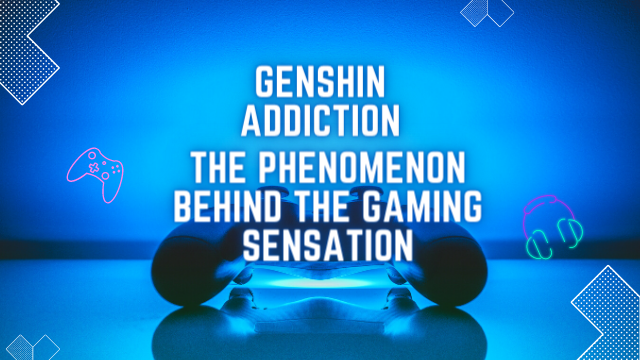Genshin Addiction – The Phenomenon Behind the Gaming Sensation

In the vast universe of online gaming, every once in a while, a game emerges that captures the collective imagination of players worldwide. One such game is “Genshin Impact,” developed by the Chinese company miHoYo. With its breathtaking open-world design, intricate character system, and engaging storylines, “Genshin Impact” quickly became a global sensation. However, as with many successful online games, it has given rise to discussions about “Genshin Addiction,” a term used by fans and critics alike to describe the intense dedication and time some players invest in the game.
“Genshin Impact” isn’t just any typical action RPG (Role-Playing Game). It skillfully combines elements from various gaming genres, including action, exploration, and gacha (a Japanese term for capsule-toy vending machine, used in gaming to describe a loot box-style system). The gacha system, in particular, involves players spending virtual (or real) currency to “wish” for powerful characters and weapons. This element of chance, coupled with the game’s regular introduction of new, appealing characters, creates an anticipation loop, encouraging continuous play and investment.
But what makes “Genshin Addiction” noteworthy? Is it merely enthusiastic engagement, or does it tread the fine line of genuine addiction? To understand this, we delve deeper into the game’s mechanics, player behavior, and the broader implications of such gaming trends.
- Engaging Gameplay Mechanics:
- “Genshin Impact” offers a richly detailed world, Teyvat, where players can explore, battle, and complete quests. The game continuously evolves, with miHoYo releasing updates, new regions, and characters, ensuring that there’s always something new for players to explore.
- The Gacha System:
- Central to discussions of addiction, the gacha system in “Genshin Impact” is both its strength and potential pitfall. Players can spend real money to purchase in-game currency (Primogems), which can then be used to make “wishes” for new characters or weapons. The randomness of the outcome and the desire for specific characters can lead players to spend large amounts of money, a phenomenon known as “whaling.”
- Social Dynamics:
- “Genshin Impact” fosters a strong community spirit. There are numerous online forums, fan art communities, and YouTube channels dedicated to character builds, strategies, and game lore. Being part of this community can intensify a player’s engagement with the game.
- The Fine Line Between Passion and Addiction:
- While many players enjoy “Genshin Impact” without any adverse effects, the term “Genshin Addiction” has emerged to describe an overindulgence where regular gameplay might interfere with daily life activities, responsibilities, or financial well-being. Genuine addiction symptoms might include neglecting real-world responsibilities, spending beyond one’s means on in-game purchases, or feeling anxious when unable to play.
- Addressing the Issue:
- Recognizing the addictive potential of online games, many countries and organizations are advocating for responsible gaming practices. Some measures include setting spending limits, introducing gameplay timers, or providing resources for players who feel their gaming habits might be veering into addiction.
In conclusion, “Genshin Addiction” embodies the modern gaming world’s challenges, where immersive and engaging gameplay can sometimes lead to excessive indulgence. While “Genshin Impact” offers a captivating virtual experience, it’s crucial for players to strike a balance, ensuring that the world of Teyvat enhances their real lives rather than detracting from them. As the gaming industry continues to evolve, fostering a responsible and informed player base becomes paramount, ensuring that games remain a source of joy, creativity, and connection.








